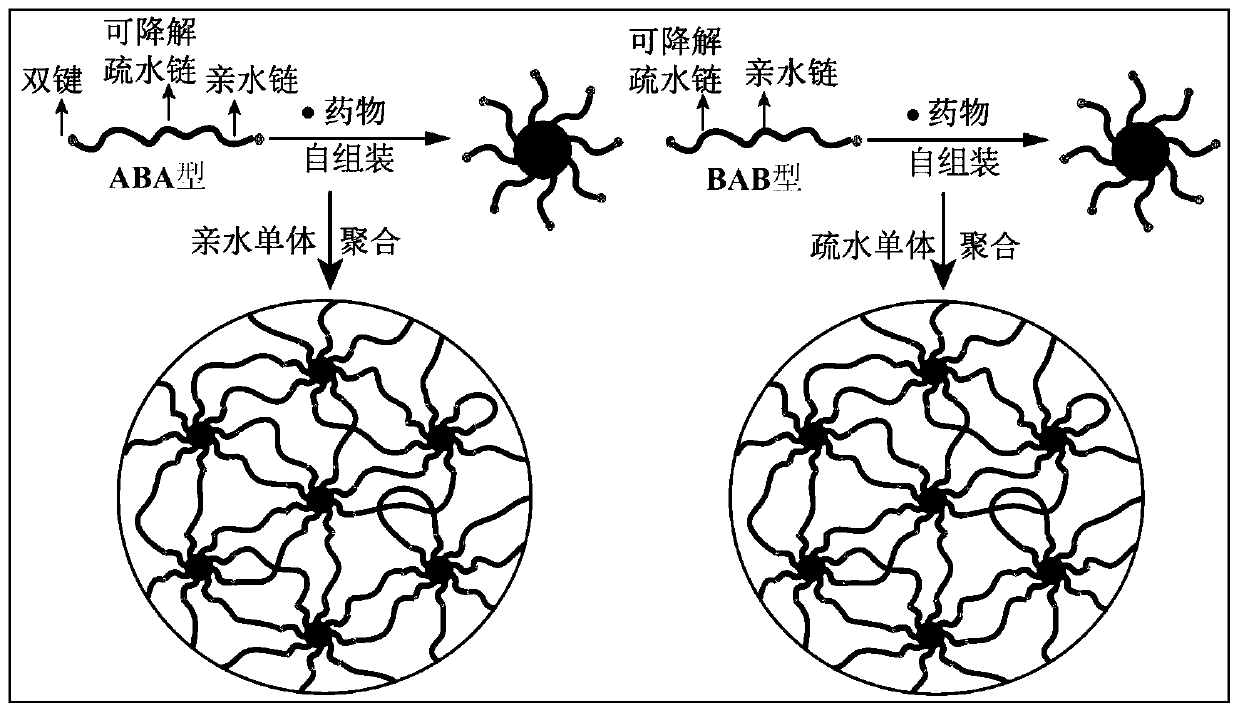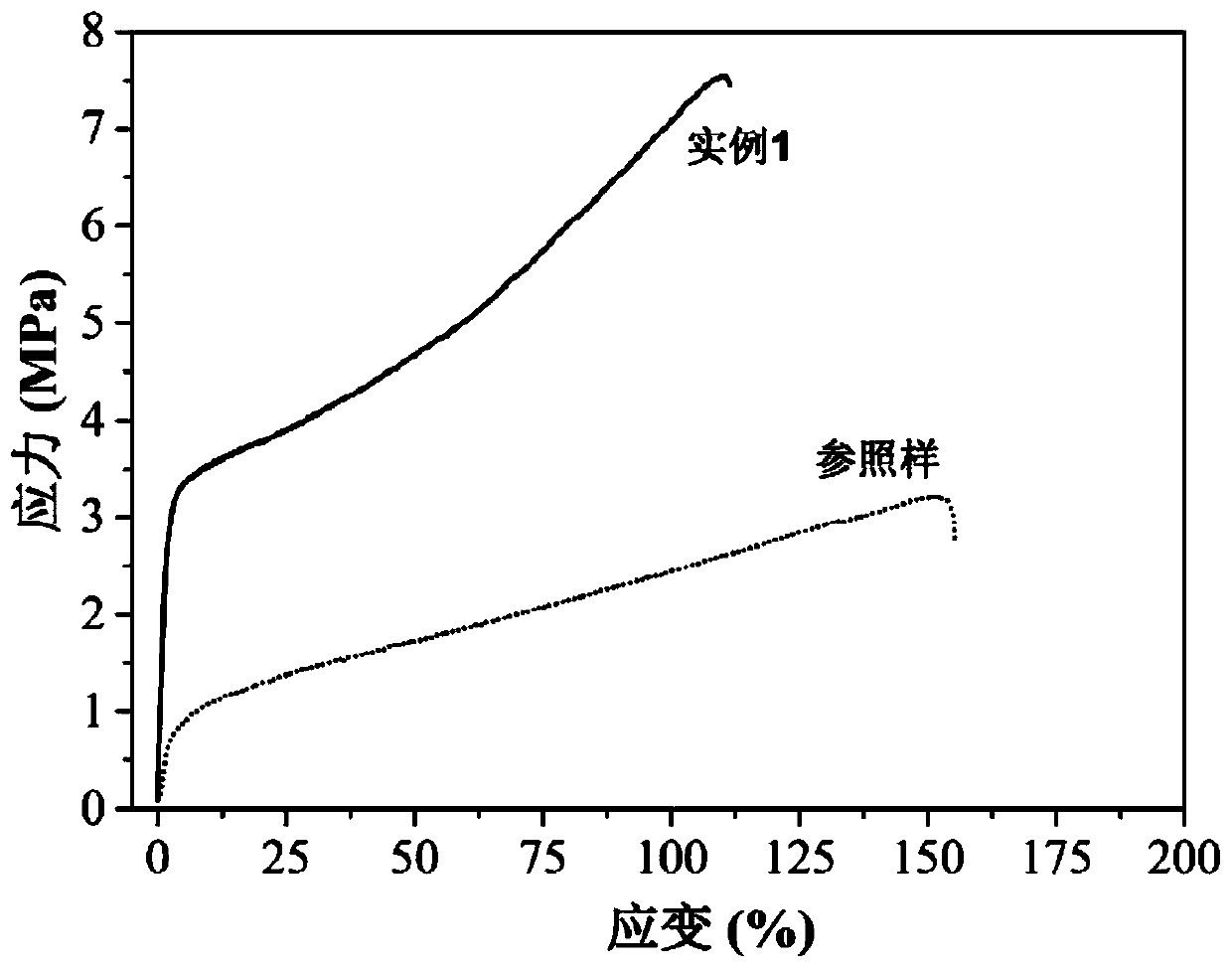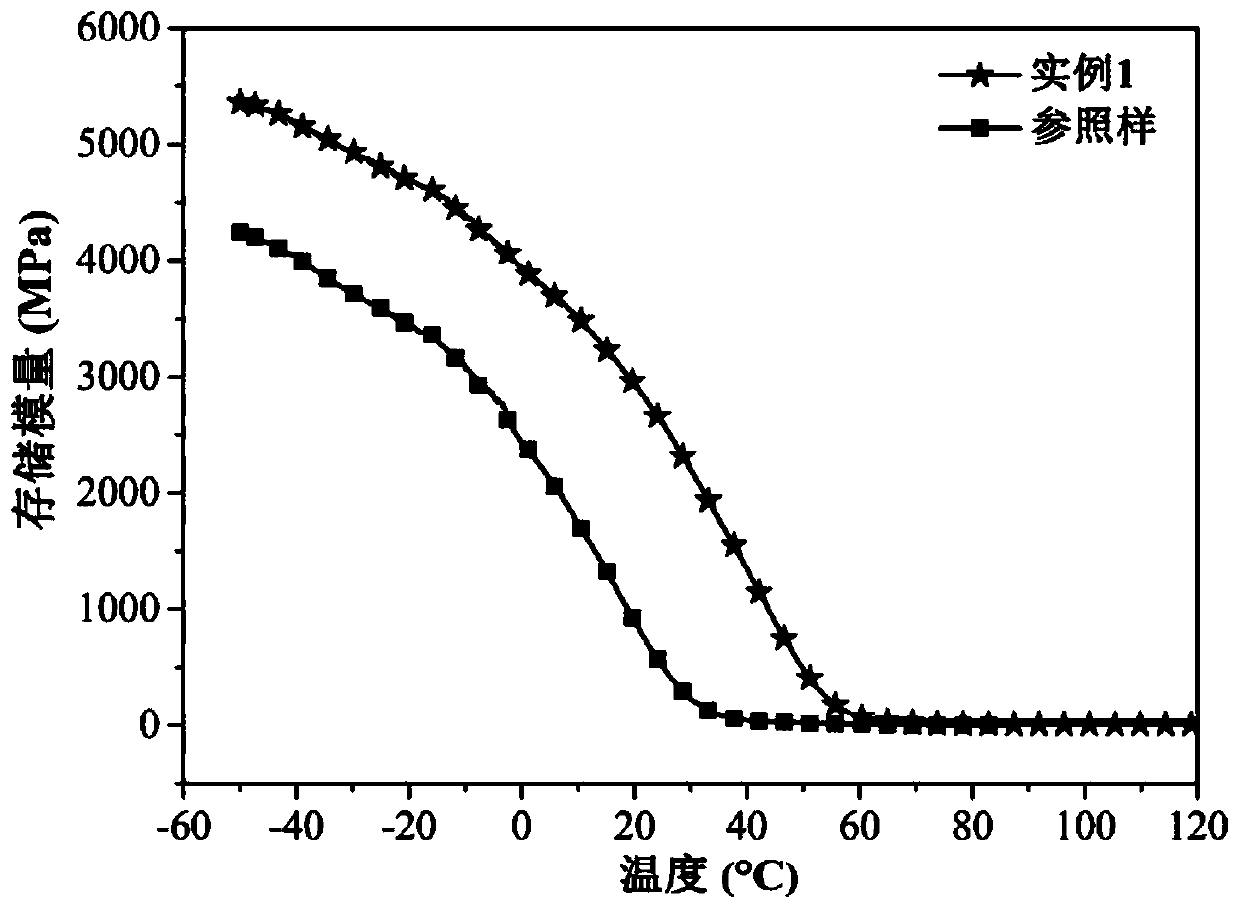Preparation method of shape memory polymer material with drug release function, product obtained therethrough, and application of product
A technology of polymer materials and drugs, which is applied in the field of preparation of shape memory polymer materials, can solve the problems of material mechanical strength and modulus decline, easy aggregation and precipitation of drugs, and uncontrollable drug loading, so as to improve shape memory performance and Effect of mechanical strength, high mechanical strength and high modulus
- Summary
- Abstract
- Description
- Claims
- Application Information
AI Technical Summary
Problems solved by technology
Method used
Image
Examples
Embodiment 1
[0084] 1. Polyethylene glycol-polycaprolactone-polyethylene glycol triblock copolymer (PEG) functionalized with 152.45 mmol terminal acrylate groups 2500 -PCL 4000 -PEG 2500 ) and 0.1 g of enoxacin were dissolved in 18 ml of deionized water, and ultrasonically dispersed for 60 min to make the triblock copolymer form nanomicelles, and all the drugs were dissolved in the micelles.
[0085] 2. After completely dissolving, add 3.25 g of hydroxyethyl acrylate, 1.89 g of acrylic acid and 0.064 g of photoinitiator 2, 2-dimethoxy-2-phenylacetophenone. Nitrogen gas was bubbled for 20 min to remove dissolved oxygen, and the mixed solution was slowly injected into the glass mold with a disposable syringe, and multiple molds injected with the reaction mixed solution were placed under an ultraviolet device for photocrosslinking reaction, wherein the ultraviolet light intensity was 10 mW / cm 2 . The mold was illuminated for 20 minutes before and after the mold. After the reaction was ove...
Embodiment 2
[0092]1, with embodiment 1.
[0093] 2. After it is completely dissolved, add 3.25 g of hydroxyethyl acrylate, 1.89 g of acrylic acid and 0.064 g of potassium persulfate. Nitrogen was bubbled for 20 min to remove dissolved oxygen, and the mixture was slowly injected into glass molds with a disposable syringe, and multiple molds injected with the reaction mixture were placed in an oven, and reacted at 45 °C for 12 h. After the reaction is over, the crosslinked polymer material is taken out from the mold and placed on a polytetrafluoroethylene film, dried in an oven at 60 °C for 12 h, and then raised to 80 °C for 12 h in vacuum , to obtain the shape-memory polymer material, which is a temperature-responsive or water-responsive shape-memory polymer material.
Embodiment 3
[0095] 1, with embodiment 1.
[0096] 2. After it is completely dissolved, add 3.25 g of hydroxyethyl acrylate, 1.89 g of acrylic acid and 0.064 g of potassium persulfate. Nitrogen gas was bubbled for 20 min to remove dissolved oxygen, and the mixed solution was slowly injected into the glass mold with a disposable syringe, and multiple molds injected with the reaction mixed solution were placed in a UV curing printer for photocrosslinking reaction, UV curing printer The UV light intensity is 30 mW / cm -2 , the printing speed is 50 mm / hour. The printed material was taken out from the mold and placed on a polytetrafluoroethylene film, dried in an oven at 60 °C for 12 h, and then raised to 80 °C for 12 h in vacuum to obtain the shape memory height The molecular material is a temperature-responsive or water-responsive shape memory polymer material.
PUM
| Property | Measurement | Unit |
|---|---|---|
| Tensile strength | aaaaa | aaaaa |
| Tensile strength | aaaaa | aaaaa |
| Tensile strength | aaaaa | aaaaa |
Abstract
Description
Claims
Application Information
 Login to View More
Login to View More - R&D Engineer
- R&D Manager
- IP Professional
- Industry Leading Data Capabilities
- Powerful AI technology
- Patent DNA Extraction
Browse by: Latest US Patents, China's latest patents, Technical Efficacy Thesaurus, Application Domain, Technology Topic, Popular Technical Reports.
© 2024 PatSnap. All rights reserved.Legal|Privacy policy|Modern Slavery Act Transparency Statement|Sitemap|About US| Contact US: help@patsnap.com










